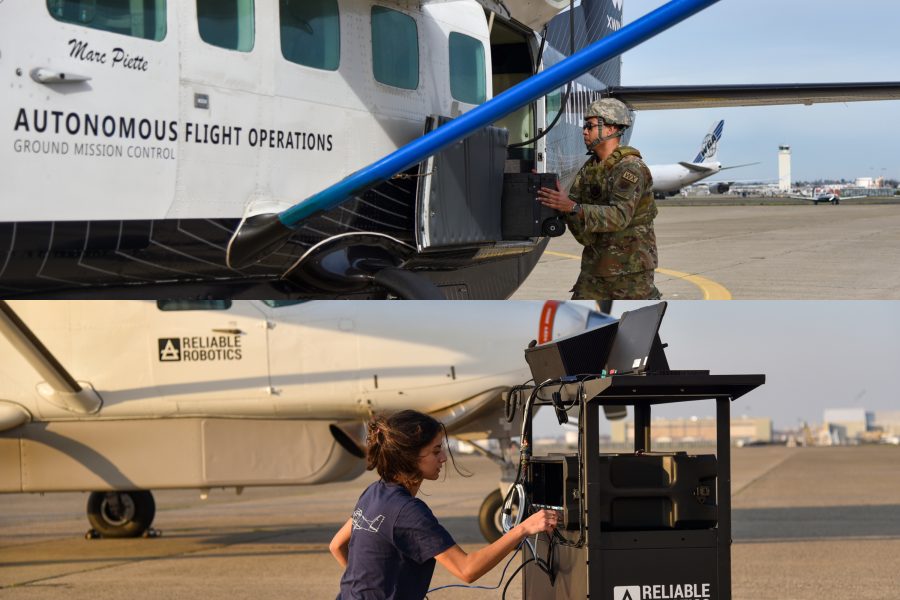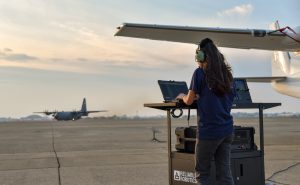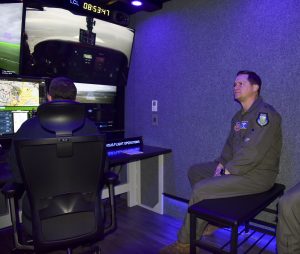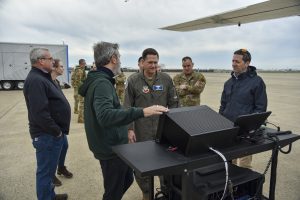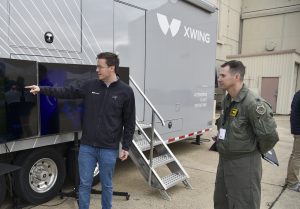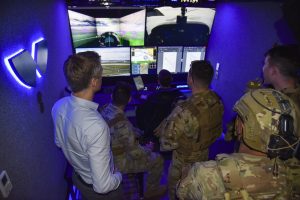The Air Force got a taste of how autonomous aircraft could enable Agile Combat Employment last month, as two startup businesses demonstrated how their software and hardware retrofits could let conventional aircraft taxi, take off, fly, and land without a pilot at the controls.
The demonstrations took place in California during Agile Flag 24-1, which ran from Jan. 24-Feb. 3 with the primary purpose of certifying the ACE capabilities of the 4th Fighter Wing, which flew their from its home station at Seymour Johnson Air Force Base, N.C.
Reliable Robotics and Xwing each demonstrated autonomous retrofits to Cessna aircraft during the exercise. Both received their airworthiness approval from the Federal Aviation Administration shortly before the exercise began.
Reliable Robotics had a crew rapidly set up a control station at Sacramento McClellan Airport to control the flight of a Cessna 208 Caravan operating at Hollister Municipal Airport, 120 miles away.
“What we were trying to do is we were trying to demonstrate that … we could operate on their timeline, in their location, and be flexible with any kind of mission-planning that would need to be done in order to be operationally relevant for them, anywhere on the planet,” retired Maj. Gen. David O’Brien, senior vice president of government solutions, told Air & Space Forces Magazine. “And that was a big hit.”
Xwing flew a second Cessna 208 Caravan more than 2,800 miles, completing multiple missions, including an operational mission in which the aircraft transported equipment between March Air Reserve Base and McClellan.
“When we were invited to Agile Flag, the Air Force didn’t really know what to ask us to do,” said retired Col. Matthew Getty, Xwing’s business development lead. “And that magic process of a good exercise happened in real time, when they saw the technology, started to understand it, and then had a requirement and they said ‘Hey, can you do this?’”
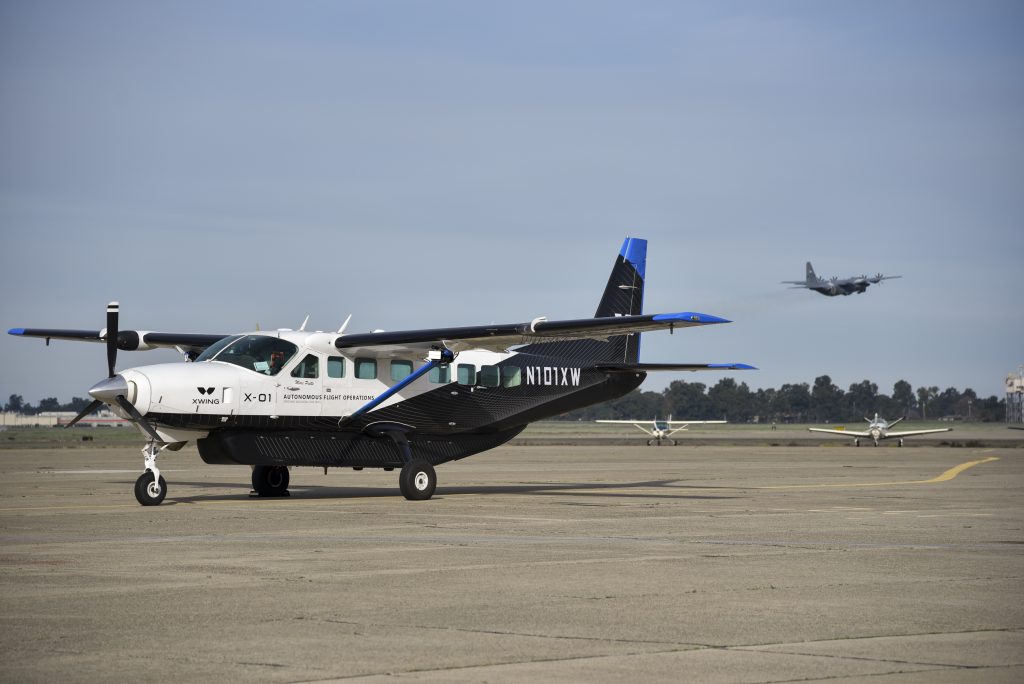
The two companies are working with the AFWERX, the Air Force Research Laboratory’s innovation arm, and the “Autonomy Prime” program, which has been in the works for more than a year now.
Distinct from what the Air Force is trying to achieve with autonomous technology for Collaborative Combat Aircraft, which aims to team manned fighters with unmanned “wingmen,” the tech on display at Agile Flag seeks to leverage autonomy to support logistics and to adapt any available aircraft into a pilot-less one.
These pilotless aircraft retain a human “on the loop,” actually a controller on the ground to make high-level flight path adjustments and communicate over the radio as needed. But the aircraft itself need not carry any personnel.
Without a pilot in the cockpit, the autonomy technology handles the basic flying, presenting the pilot on the ground with a simple interface that requires less training and reduces their cognitive load.
“The person that is in the ground floor station is not flying the airplane, that person is choosing the destination and is talking to air traffic control,” Xwing CTO and founder Maxime Gariel said. “So there are no flying skills.”
Rather, the operator needs to be “somebody who knows about aeronautical decision-making, so if I send this airplane, am I sending this airplane into a very dangerous environment or not?” he said. “Am I good to let the airplane enter the runway, for instance? It’s really low training.”
The technology also provides flexibility, noted Reliable Robotics CEO Robert Rose. Trained pilots can switch between aircraft types more easily, and their time can be used more efficiently.
“If you have to have a person inside the aircraft to go off to someplace 1,000 miles away or whatever, they’re now stuck at that out station,” said Rose. “And if you’ve got two, three, four, five, aircraft that you’re trying to run back and forth between those two locations, you’re going to quickly run out of people. Because the reality is aircraft need to be unloaded. … And with remote piloting now, you’re going to increase the effective flight hour utilization of that pilot.”
Both advantages could be crucial in the Indo-Pacific. Agile Combat Employment is built on the idea of small teams of Airmen dispersing to operate from numerous remote or austere locations. In the Pacific, those locations will likely be many small islands with limited resources.
Moving teams around and ensuring they get the equipment they need is a massive logistical problem that Air Mobility Command has been working on. But the Air Force is battling a persistent pilot shortage, and even when pilots are available, the aircraft they fly are usually large.
“Our [mobility] fleet starts at a C-130, generally speaking,” said Getty. “And it’s just not an efficient way to move a large amount of what we need to move. Ginning up a C-130 with the manpower and the tail of that aircraft, we’re often forced to wait to move that aircraft until it becomes more of an efficient operation where I’ve got more stuff to shove in there.”
As a result, Getty said the Air Force has focused on solving the problem of moving “1,000 pounds over 1,000 miles” more efficiently. The Cessna aircraft used by Xwing and Reliable Robotics are ideal for such a problem, he argued.
“A lot of the attention that we’re getting after Agile Flag is coming out of the Pacific. And they’re asking, not, ‘Can you guys put this on a C-130?’ [but] ‘How soon can I have a Caravan?’” said Getty. “So we think that the requirement and the need for this type of platform that we’re actually building on today is needed today. And we could produce it and deliver it today.”
Not that the Air Force isn’t interested in scaling the autonomous solution to larger platforms: Reliable Robotics has already conducted for the Air Force a feasibility study of autonomy for larger aircraft, the KC-135 tanker.
“The feedback to us right now is that they are definitely interested in this,” O’Brien said. “I think they want to continue to explore it. And I’m expecting to see some additional requests coming from the Air Force to industry in order to further refine this capability.”
Getty said the Air Force must free up its limited pool of pilots for the most demanding missions—while entrusting autonomous technology to handle more basic actions.
“Do I really need Air Force pilots—highly trained, with exquisite training, two years of training, millions of dollars—to fly supplies to pre-position on an island?”
Both companies said their autonomous technology could also help reduce crew configurations, something AMC has experimented with in recent years, by helping reduce the workload for a single pilot. The concept is similar, officiasl said: freeing the human to focus on the more difficult parts of the mission.
